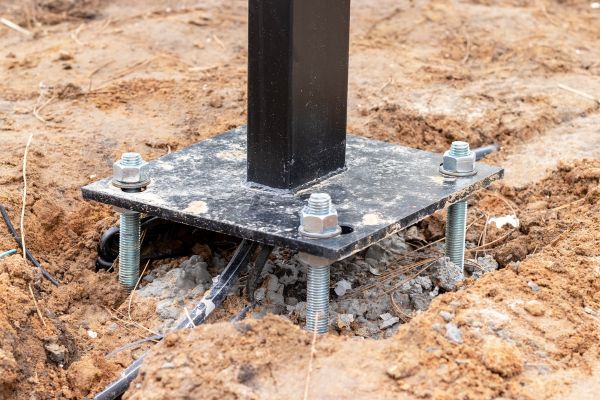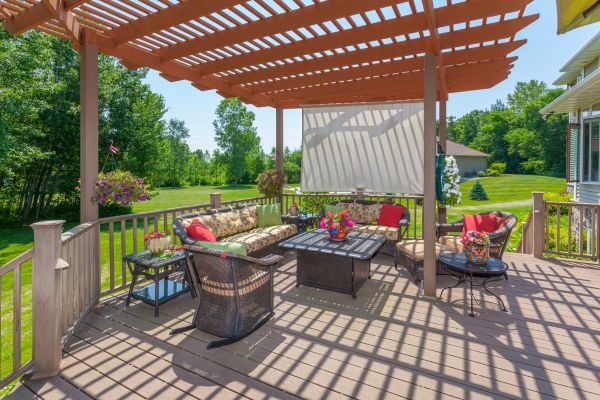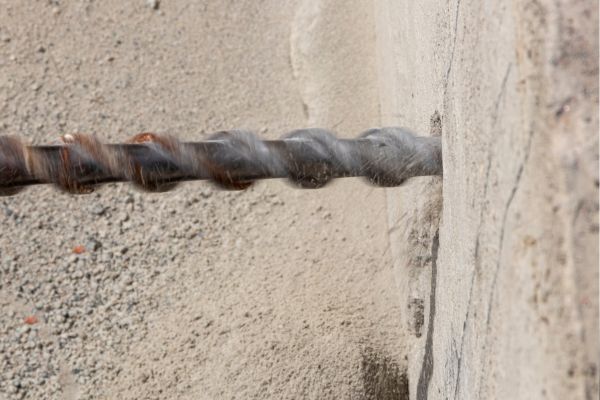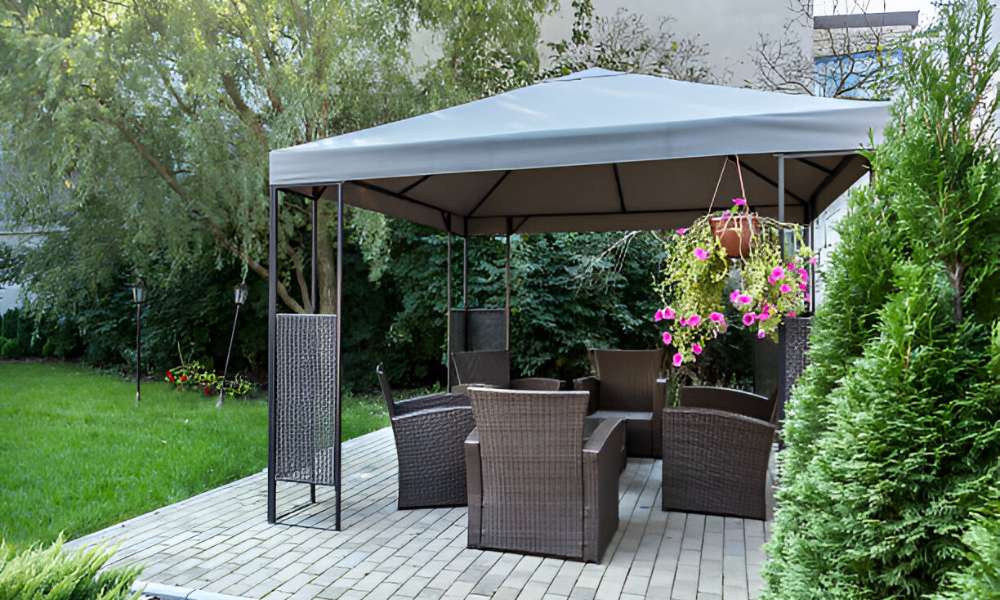Securing a gazebo on pavers is essential for maintaining the safety and longevity of your outdoor structure. By understanding how to secure a gazebo on pavers, you can enjoy the benefits of a stable and durable setup that withstands various weather conditions. This process is important because an unsecured gazebo can pose significant risks during high winds or heavy use. Utilizing methods such as concrete anchor screws, paver weights, and sandbags, you can ensure your pavilion remains firmly in place. Whether you are hosting a gathering or seeking a peaceful retreat in your garden, securing your pavilion on pavers is a straightforward task that enhances the usability and safety of your outdoor space.
How Often Should I Check The Gazebo’s Stability?
It is important to regularly check the stability of your gazebo to ensure it remains safe and secure. Depending on the material and construction of your pavilion, it is recommended to check its stability at least once a month. Look for any signs of wear and tear, such as loose screws or bolts, rust, or damage to the structure.
Can I Secure A Gazebo On Pavers Without Drilling?
Yes, you can secure a gazebo on pavers without drilling by using alternative methods such as weighted anchors or sandbags. Weighted anchors are designed to hold down the gazebo securely without the need for drilling into the stones. Simply place the anchors around the base of the pavilion and tighten them to ensure stability. Sandbags can also be used by placing them strategically around the pavilion to keep it in place.
Assemble Your Gazebo

Before you can secure a gazebo on pavers, it’s essential to assemble the structure correctly. Start by laying out all the parts and reviewing the instruction manual thoroughly. Ensure that you have all the necessary tools and components before beginning the assembly. Follow the manufacturer’s guidelines step by step, paying close attention to the stability of the frame. Proper assembly is critical because any misalignment or loose connections can compromise the effectiveness of the anchoring process. Once your pavilion is fully assembled, double-check all connections and make sure the frame is square and level. This attention to detail will help in achieving a secure and stable installation on the pavers.
Prep Your Pavers

One effective way to secure a gazebo from wind on concrete is by using concrete pavers as a stable base. Before laying the pavers, ensure the ground is leveled and compacted properly to provide a solid foundation for your pavilion. In addition, using adhesive or mortar to secure the pavers in place can prevent them from shifting during strong winds, offering extra stability.
Anchor It Down

Anchoring your gazebo is the most critical step in the process of securing a gazebo on pavers. One effective method is using concrete anchor screws, which involve drilling holes into the stones and inserting the screws to hold the pavilion feet firmly in place. Another popular method is using paver weights or sandbags, which are placed on the pavilion legs to add stability. L-brackets can also be used to bolt the pavilion frame to the stones directly. Each method has its advantages, but combining them can offer maximum security. By anchoring your pavilion properly, you can prevent it from shifting or toppling over during windy conditions, ensuring it remains a safe and enjoyable outdoor structure.
Benefits Of A Secured Gazebo

A well-secured gazebo not only enhances the safety of your outdoor space but also extends the life of the structure. It prevents damage caused by sudden movements or tipping, which can occur during strong winds or heavy use. Additionally, a stable pavilion provides a more comfortable and reliable area for relaxation and entertainment. By securing your pavilion, you create a dependable shelter that can withstand various weather conditions, allowing you to enjoy your outdoor space without worry. This investment in stability is a straightforward process that significantly improves the usability and safety of your pavilion.
Necessary Materials

To secure a gazebo on pavers effectively, you will need specific materials to complete the job. Essential items include concrete anchor screws, a power drill with masonry drill bits, a level, and a wrench. Additionally, gather paver weights, sandbags, or L-brackets, depending on the anchoring method you choose. Having all the necessary materials on hand will streamline the installation process and ensure you have everything needed to secure your gazebo. Proper preparation with the right tools and materials is vital for achieving a stable and secure setup.
Drill Anchor Holes

Begin by marking the positions where the gazebo feet will be anchored. Use a power drill with a masonry bit to drill holes into the pavers at the marked spots. Ensure the holes are deep enough to accommodate the anchor screws. This step requires precision to avoid damaging the pavers and to ensure the anchors hold firmly. Once the holes are drilled, insert the concrete anchor screws and tighten them using a wrench. This method provides a strong and reliable anchor for your pavilion, keeping it securely in place.
Installing Gazebo Feet Plates

Installing gazebo feet plates is a crucial step in ensuring your gazebo is secure on pavers. These plates provide a sturdy base, allowing for the pavilion to be firmly attached to the paver surface. Begin by aligning the feet plates with the corners of the pavilion, ensuring they are level and properly positioned. Once aligned, mark the locations for drilling. Using a masonry drill bit, create holes in the pavers at the marked points. This step is vital for a stable and secure installation. After drilling, insert concrete anchor screws through the feet plates and into the holes. This will anchor the gazebo firmly to the pavers, preventing any movement due to wind or heavy use. By properly installing pavilion feet plates, you significantly increase the stability of your outdoor structure, ensuring it remains secure on pavers.
Tightening Anchor Bolts Securely

Tightening anchor bolts securely is essential for maintaining the integrity of your gazebo on pavers. After placing the anchor bolts through the feet plates and into the drilled holes, use a wrench to tighten them. It’s important to ensure that each bolt is tightened uniformly to avoid any imbalance. Over-tightening can cause damage to the pavers or the pavilion structure, so it’s crucial to apply just the right amount of torque. Regularly checking and re-tightening these bolts, especially after severe weather conditions, can prevent loosening over time. Secure anchor bolts ensure that your gazebo remains firmly attached to the pavers, providing a stable and safe environment for your outdoor activities. Properly tightened bolts are a key component in securing a pavilion on pavers effectively.
Using Paver Weights For Stability
Using paver weights for stability is another effective method to secure a gazebo on pavers. Paver weights are heavy blocks that can be strategically placed at the base of the gazebo. This method is especially useful when drilling into the pavers is not an option. To use paver weights, position them around the legs of the pavilion, ensuring they are evenly distributed. This helps in balancing the structure and providing additional weight to resist wind forces. Paver weights are also versatile, allowing for easy adjustments and repositioning as needed. By using paver weights, you can achieve a secure and stable pavilion setup without causing any permanent modifications to your paver surface. This approach offers a flexible solution to maintaining the stability of your pavilion on pavers.
Strategic Placement Of Sandbags

Strategic placement of sandbags is an effective method for securing a gazebo on pavers, especially in windy conditions. Begin by filling sandbags with the appropriate amount of sand to provide adequate weight. Place these sandbags at the base of each pavilion leg, ensuring they are evenly distributed. This method adds significant weight and stability, preventing the gazebo from shifting or lifting. Additionally, securing the sandbags to the pavilion legs with sturdy straps or ties can enhance their effectiveness. By strategically placing sandbags, you can achieve a secure and stable pavilion setup on your pavers.
Inspecting Anchors And Bolts Periodically
Regularly inspecting anchors and bolts is vital for maintaining the security of your gazebo on pavers. Over time, weather conditions and regular use can cause these components to loosen or wear out. Schedule periodic inspections to check the condition of all anchors and bolts. Tighten any loose bolts and replace any that show signs of rust or damage. This proactive approach helps ensure the long-term stability of your gazebo, preventing accidents and extending the life of your outdoor structure. By consistently inspecting and maintaining your anchors and bolts, you can enjoy a safe and secure pavilion setup on your pavers.
The Final Thought
Securing a gazebo on pavers is essential to ensure its stability and longevity. By following the steps outlined in this article, including selecting the right type of anchors and using proper tools for installation, you can effectively secure your gazebo to the pavers. Regularly inspecting the anchoring system and making adjustments as needed will help maintain the gazebo’s stability over time. Remember that safety should always be a top priority when setting up outdoor structures like gazebos. Take the necessary precautions and enjoy your securely anchored pavilion for many years to come.
